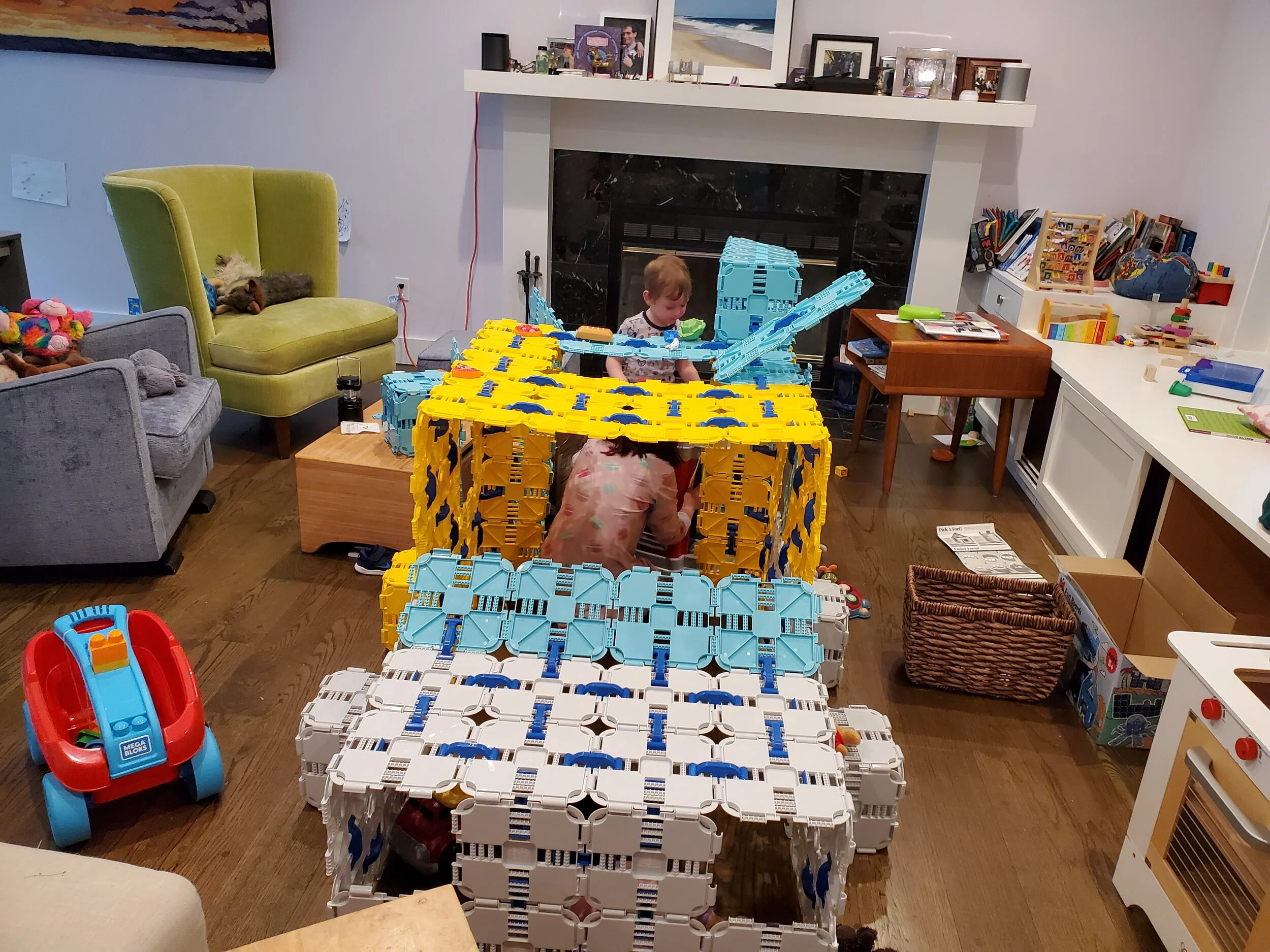A Fort of Own's Own
A Fort of Own's Own
photographs and text by Joshua Dirlam and Shannon McCampbell
Parent Statement:
In April, as quarantine lengthened, we bought the same building material for the kids of each of our families so they could share their creations over Zoom or FaceTime. Their structures showed the kids exercising their desire to have their own autonomous regions within a larger space. I remember moving my futon into my closet when I was about my daughter's age (7-8 liminal phase). I think there is a Neolithic phase of childhood development, it's all rocks, sticks, caves and fire. Sometime, after we started our fort Odessy, Susan C. Margolin wrote an article on children's forts in NYT that was reflective of what we saw, like W wanting to be shut in and E wanting windows and arachetectual structure. The article quoted David Sobei, professor emeritus at Antioch University’s education department and author of “Children’s Special Places: Exploring the Role of Forts, Dens, and Bush Houses in Middle Childhood.”"Forts have always been a part of childhood, Sobel researched the developmental function forts play in children’s lives across cultures. They are universal, he says, driven by “biological genetic disposition” as children develop a “sense of self,” separate from parents. It certainly felt during quarantine, when we were all on top of each other, that the children were building themselves into separation and identity.










